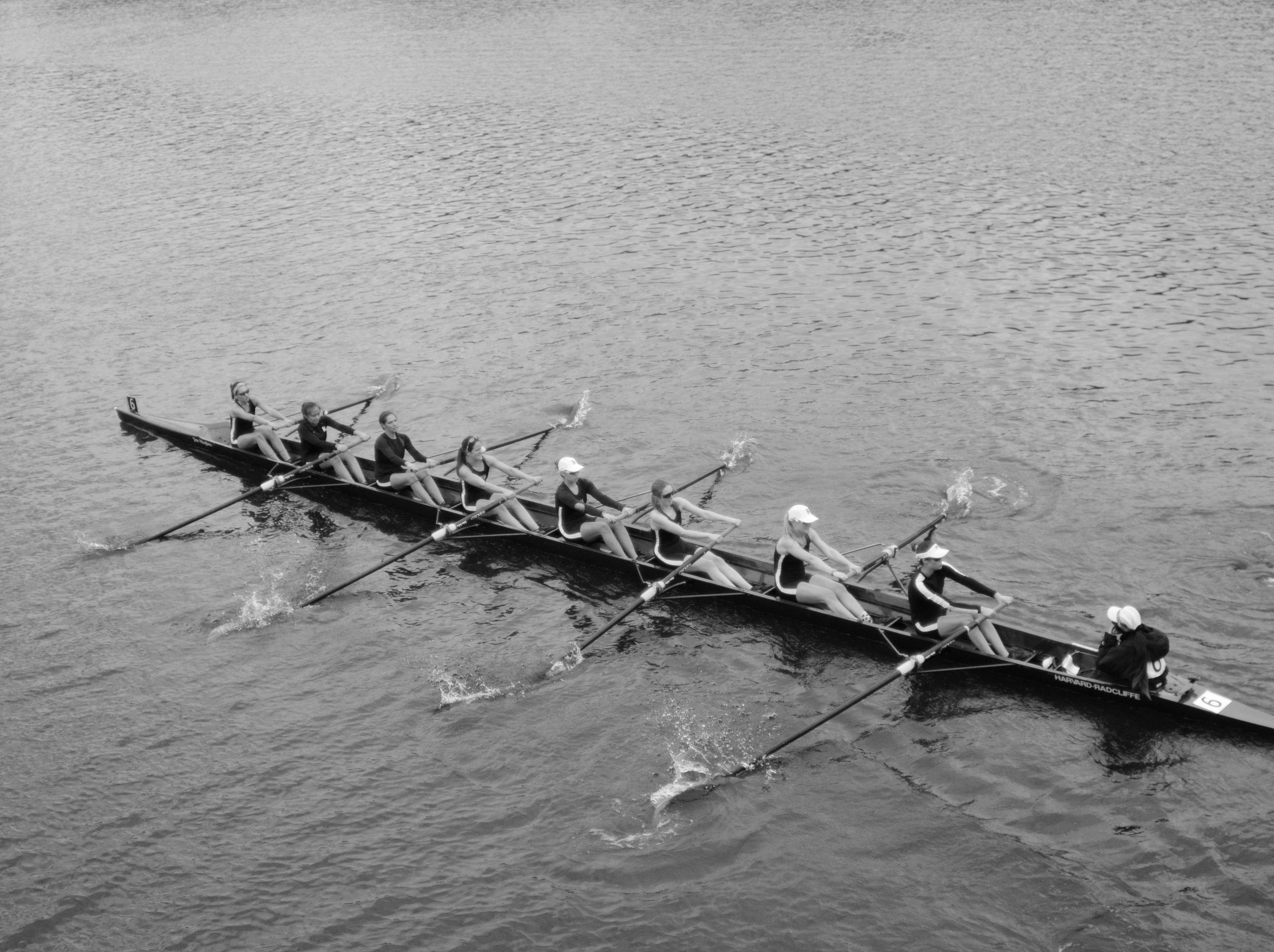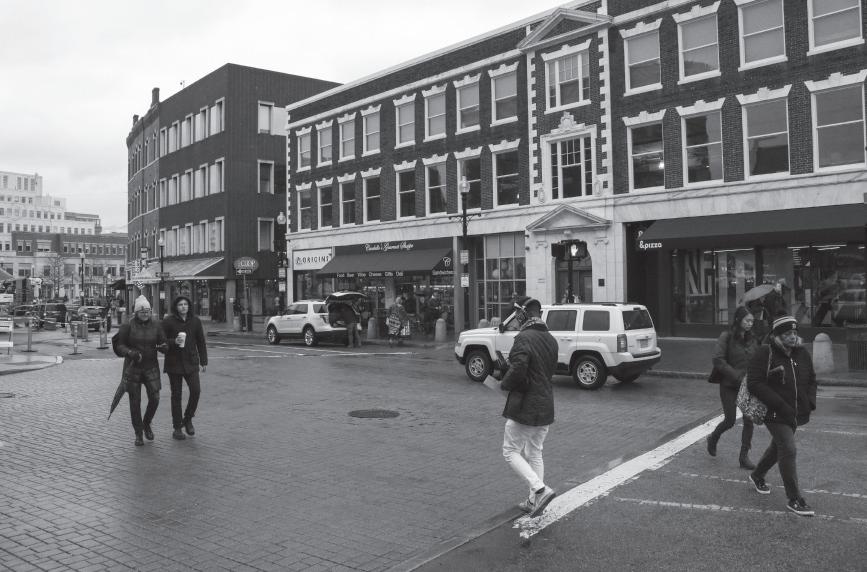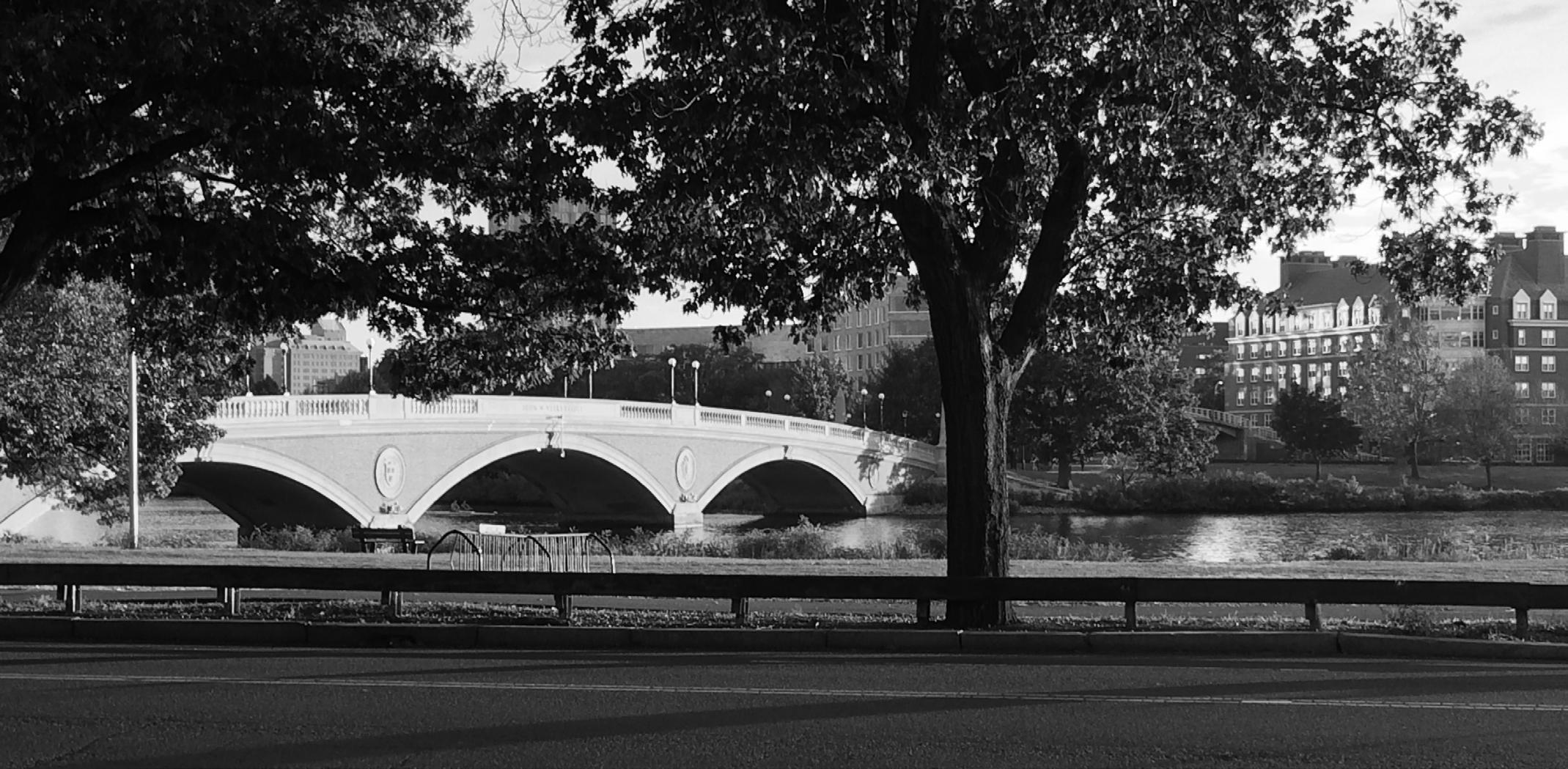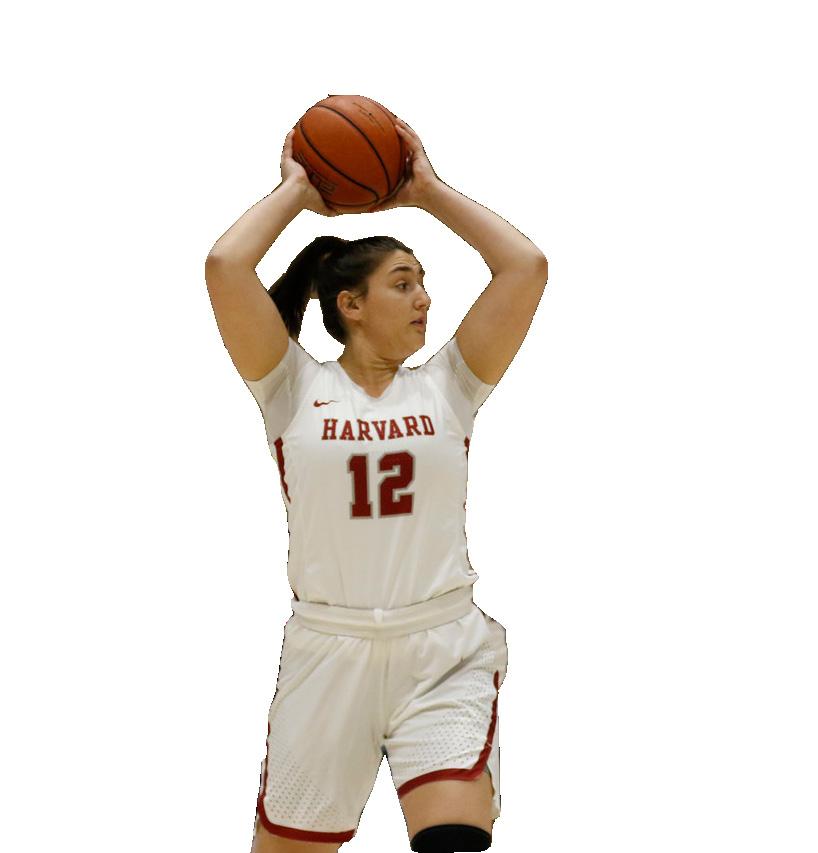
23 minute read
News
Kennedy, Markey Debate Issues
By JASPER G. GOODMAN CRIMSON STAFF WRITER
In the first debate between incumbent United States Senator Edward J. Markey (D-Mass.) and U.S. Representative Joseph P. Kennedy III (D-Mass.), few major substantive differences emerged between the two candidates.
Kennedy criticized Markey for past foreign policy votes and over campaign finance issues, but he declined to attack the incumbent harshly, and instead called him a “good senator” who has “made an important contribution to our commonwealth and our country.”
In the debate, hosted by WGBH News, Markey stressed his experience and touted legislative accomplishments on policies involving gun control, climate change, and Alzheimer’s disease research. He has served in the U.S. Senate since 2013.
“On the big issues of today — the challenges of today — I’ve not only been leading, but I’ve been delivering with legislation which passes, which protects the people of Massachusetts and the whole country,” Markey said.
Markey also trumpeted his introduction of the Green New Deal — a resolution aimed at curbing carbon emissions — with freshman U.S. Representative Alexandria Ocasio-Cortez (D-N.Y.). “The Green New Deal, since we introduced it — Alexandria Ocasio-Cortez and I — just one year ago, it’s transformed the debate on this issue,” Markey said.
The two candidates sparred over campaign finance during the hour-long debate. Kennedy, a 2009 graduate of Harvard Law School, threw barbs at Markey for declining to comply with the People’s Pledge, which aims to limit outside money in politics, in this election. Markey signed onto the pledge back in 2013.
Markey argued that candidates “should not silence” progressive groups. He has released an alternative to the People’s Pledge that barrs negative advertising funded by outside organizations but still allows for third-party spending.
“How are you ever going to pass a Green New Deal if you allow the fossil fuel industry to open up the spigot and flood the airwaves with scare tactics?” Kennedy retorted.
Kennedy also drew a distinction between himself and Markey on foreign policy issues. He criticized Markey for his 2002 vote in favor of the Iraq War and his 2013 “present” vote on a resolution to authorize military force in Syria.
Markey said that the administration of former President George W. Bush “lied” about the presence of nuclear weapons in Iraq.
“It was a false pretense to start a war,” Markey said. “I’m still angry about the lie to the American people. I regret that vote. It was a mistake.”
Markey said that he voted “present” in committee on the 2013 Syria authorization due to a “rush to judgement” and a lack of information.
To defend his foreign policy record, Markey touted endorsements from several peace groups, including Peace Action and the Council for a Livable World.
The two candidates articulated similar views on many of the debate topics. They both posited their support for similar immigration reforms and Medicare-for-all. Both also chastised President Donald J. Trump for decisions he has made in office and called for Attorney General William P. Barr to be impeached.
Barr has come under fire in recent weeks after he intervened to lessen the Department of Justice’s sentencing recommendation for Trump associate Roger J. Stone Jr.
“This president violates his oath of office to protect every single citizen literally on a daily basis,” Kennedy said.
Erin O’Brien, a political science professor at the University of Massachusetts Boston, said Kennedy “punted” on multiple opportunities to differentiate himself from Markey.
“My main takeaway from the night is that Kennedy got two opportunities to say why he was better and different than Ed Markey — both in the opening question and in the closing — and both times he punted,” O’Brien said. “I think that was purposeful because people like both Ed Markey and Joe Kennedy, so Joe Kennedy doesn’t want to activate anger.”
“But ultimately, at least on the policy side, this is a race of what differentiates the two, and I don’t think Kennedy did that tonight,” she added.
O’Brien said she thought the debate was a “draw,” but noted that Markey had a strong start to the evening when the discussion was focused on climate change.
“He was able to dominate the first 15 minutes of discussion on an issue that he is recognized to be a real leader on,” she said.
Speaking to reporters after the debate, Kennedy said he hopes to “leverage” the power of a Senate seat in a blue state better than Markey has over his time in office.
“Senators from this state have traditionally been able to leverage that position to and the platform and the platform that comes with it,” Kennedy said. “I think we can get more out of this seat.”
jasper.goodman@thecrimson.com
Baron to Speak at Commencement BARON FROM PAGE 1
transformative time for American journalism,” Bacow said. “His distinguished career bespeaks a deep commitment to the pursuit of truth and to the vital role of a free press in a democratic society. We look forward to welcoming him here on Commencement Day.”
President of the Harvard Alumni Association Alice E. Hill ’81 called Baron a “bold and decisive leader.”
“For decades, Marty Baron has pursued truth and tirelessly championed the role of journalism in enabling healthy democracy and fact-based discourse and debate on critical issues around the world,” Hill said. “A bold and decisive leader in his field, Marty’s distinguished career has been marked by determination, integrity, and a willingness to listen to the powerless and too-often voiceless. He will both inspire and engage our graduating students, Harvard alumni, and our entire community.”
Baron will also receive an honorary degree from the University in May. Baron’s selection comes shortly after the University announced last week that Koma Gandy Fischbein ’95, a decorated United States Navy veteran, was elected chief marshal for this year’s commencement ceremony.
Gandy Fischbein will lead the alumni procession at the annual meeting of the Harvard Alumni Association and host a lunch in Widener Library on May 28, according to a University press release sent Thursday. Previous chief marshals have included former U.S. poet laurate Tracy K. Smith ’64 and former Secretary of Education Arne Duncan ’86.
Gandy Fischbein earned several awards during her service in the Iraq War, including a Navy Commendation Medal and three Navy Achievement Medals. In addition to her military service, Gandy Fischbein was the first woman to coach the All Navy Men’s Rugby team. Gandy Fischbein said in the press release that she is honored to receive the position.
“I am humbled to receive this honor from so many distinguished classmates,” Fischbein said. “I look forward to returning to Tercentenary Theatre for this momentous day to celebrate all of our journeys, especially those just beginning for the Class of 2020.”
michelle.kurilla@thecrimson.com ruoqi.zhang@thecrimson.com
BALLOT FROM PAGE 1
Harvard Forward On Overseers Ballot
voters support our platform and want to see the Board address these issues,” Strasburger said.
Harvard Forward’s slate of candidates include John E. Beatty ’11, Lisa Bi Huang, Margaret “Midge” Purce ’17, Dorothy “Thea” L. Sebastian ’08, and Jayson U. Toweh. Toweh said in the press release that their effort is about enhancing Harvard’s teaching and research on climate.
“Our campaign is also about persuading Harvard to recognize areas of real concern among graduates across all generations and disciplines. It’s about expanding the climate conversation to include issues of economics, public health, and social justice in the university’s investment,” he said.
Beatty said in the press release that the election allows alumni to tell faculty, students, and staff that they believe Harvard must do more to address climate change and make the University more equitable and inclusive.
“We as alumni have a unique chance to ask this great university, our university, to lead in showing what modern, inclusive, sustainable education can be,” Beatty said.
University President Lawrence S. Bacow has previously spoken against divesting the school’s holdings in the fossil fuel industry, advocating instead for engagement with fossil fuel companies to combat the effects of climate change. The University has enacted a Climate Action Plan to become fossil fuel neutral by 2026 and fossil fuel free by 2050.
“While I, like my predecessors, believe that engaging with industry to confront the challenge of climate change is ultimately a sounder and more effective approach for our university, I respect the views of those who think otherwise,” Bacow wrote in a Harvard Magazine article last year. “We may differ on means. But I believe we seek the same ends — a decarbonized future in which life on Earth can flourish for ages to come.”
michelle.kurilla@thecrimson.com ruoqi.zhang@thecrimson.com
KHURANA FROM PAGE 1
Khurana Discusses Faculty Dean Search
August — in their roles. Gearan currently serves as the director the Institute of Politics.
Despite those calls, College administrators have repeatedly noted that Gearan and Herlihy-Gearan, who are not tenured, were only appointed for a single year.
Gearan and Herlihy-Gearan’s success in the interim role has caused some students to question whether status as a tenured faculty member in the Faculty of Arts and Sciences should be a prerequisite for serving as a permanent faculty dean.
Khurana cited several reasons why the College prefers to appoint tenured faculty members to the position.
He specifically mentioned their “unique perspective” in teaching undergraduates and understanding their classroom commitments and academic pressures, as well as their ability to recruit other faculty into the house and bring them in as speakers.
“We think that helps improve and strengthen the kind of integrated vision that we have for both intellectual, social, and personal aspects coming together in the house system,” he said.
Khurana further noted that tenured status allows deans to speak freely in their roles with
Rakesh Khurana Dean of the College
greater ease.
“Faculty are able to often — and I can say this for myself as a tenured faculty member — say things without actually fear of or concerns around career prospects,” he said. “And I think that works to the benefit of the students.”
“This is not to say that others don’t have important things to bring, but it is part of the philosophy that led to the creation of the House system, and it’s part of the philosophy that has guided the House system. And I want to honor that philosophy,” he added.
The five searches also come roughly a year after a campus controversy over former Winthrop faculty dean Ronald S. Sullivan, Jr.’s decision to defend Hollywood producer Harvey Weinstein against sexual abuse charges. The College eventually dismissed Sullivan, and he left Weinstein’s team, but many of the questions about the role he formerly filled remained. Aside from calling on Khurana to remove Sullivan, many student protesters demanded the College clarify what faculty deans owe to their house residents.
Khurana said the College has attempted to “demystify” the process of selecting faculty deans this year by clearly defining the role and sustaining high levels of “community engagement,” both by soliciting nominations and gathering student input on candidates.
He added that the College is “fortunate” to boast faculty who are passionate about contributing to and improving undergraduate residential life, as evidenced by “large numbers” of prospective candidates this year.
“I think that because we’ve made it more transparent about how you become faculty deans, you’d be surprised at how many people are really interested in that and just didn’t understand what was the way to even learn more,” Khurana said.
“I’m really grateful for all the outgoing faculty deans,” he added. “They’ve done a remarkable job because I think part of what’s also attractive to folks is to see the kind of communities that they’ve created.”
After finalizing its shortlists of candidates, the College will form search committees, host meetings where students and tutors can share input regarding possible candidates, and consult University administrators before making a final selection in each of the five houses.
Khurana said he hopes the College can harness these upcoming transitions as opportunities for Harvard to evaluate the futures of its upperclassmen houses and recommit to the values of its house system.
juliet.isselbacher@thecrimson.com amanda.su@thecrimson.com
LikeThe Crimson on Facebook. Facebook.com/TheHarvardCrimson
Transformative coverage.
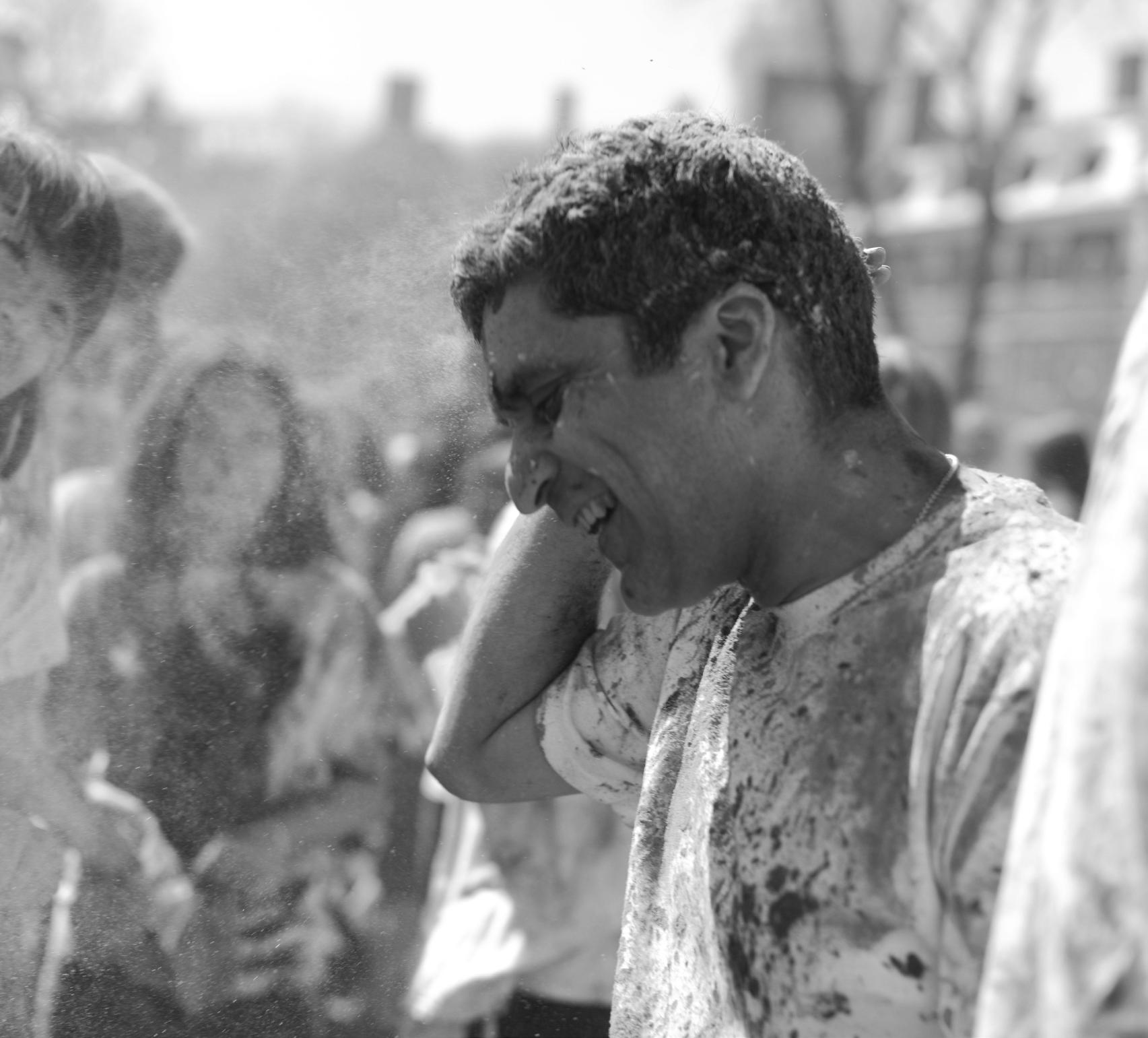
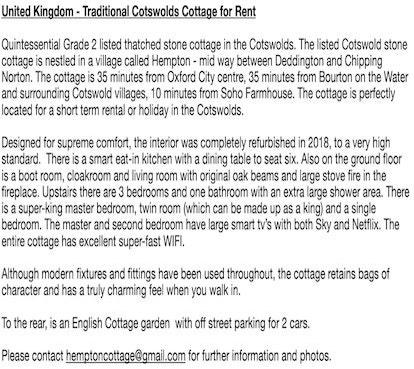
The Crimson thecrimson.com
Semitic Museum Finds New Painting in Coffin
By MEERA S. NAIR CRIMSON STAFF WRITER
A team of researchers led by Professor Peter D. Manuelian, director of the Harvard Semitic Museum, has discovered an image of an ancient Egyptian deity inside a 3,000-year-old coffin.
The discovery came as part of a week-long project in January to document and analyze three coffins which had been gifted to the museum in 1901 and 1902.
While previous researcheres had created thorough pre-existing documentation about two of the coffin’s interior designs, the third — the coffin of Ankh-Khonsu — did not boast any documentation of what scholars found when it was last opened 30 years ago. Professor Adam J. Aja, assistant curator of collections at the Semitic Museum and a researcher involved in the project, said in an interview that the researchers initially expected there would be nothing of interest inside the coffin.
“We knew there were no human remains, since they had been gifted without the bodies, but we also knew that there often weren’t any inside decorations,” Aja said.
However, to their astonishment, the opening of the coffin revealed a painting on the inside of the ancient Egyptian sun god Ra-Horakhty.
Joseph A. Greene, deputy director and curator of the museum, wrote in an email that his first impression upon seeing the inside of the coffin was muted.
“My first look inside the coffin of Ankh-Khonsu was rather unrewarding since there was a good deal of accumulated modern dust and a layer of ancient black “goo” obscuring the painting on the flat bottom inside,” Green wrote.
“After Ankh-Khonsu’s coffin had been cleaned up and the inside properly illuminated, I was able to see the painting more clearly,” Greene added.
Manuelian said the opening of the coffin marked a rare occastion in the recent history of the Semitic Museum.
“This object had never been opened before in the memory of anyone currently at the museum,” Aja said.
Opening the delicate artifacts required a team of expert curators, photographers, art handlers, materials scientists, and student assistants to comprehensively analyze the construction and design of the coffins.
The Dean’s Competitive Fund for Promising Scholarship — an internal program that awards competitive grants to Faculty of Arts and Sciences researchers — funded the project.
Ultimately, the researchers aimed to gather complete images of all three coffins to be digitally stored and shared with researchers around the world as well as visitors to the Semitic Museum.
Greene wrote that the team attempted to take full advantage of the uncommon opportunity to study the coffins.
“Because these coffins are large and heavy but fragile objects, these stresses they underwent over the week of study and recording in January 2020 are ones that we don’t want to repeat in a year’s time or in 100 years’ time,” Greene wrote.
“So we took this opportunity to study them as fully and in as much detail as possible,” he added.
meera.nair@thecrimson.com
Researchers Use Genomics to Study Mumps Outbreak
By VIRGINIA L. MA CRIMSON STAFF WRITER
A team of researchers at Harvard Medical School, the Broad Institute, and the Harvard School of Public Health investigated the 2016-2017 mumps outbreak in Boston, finding previously unknown genetic connections between cases.
The researchers collaborated with the Massachusetts Department of Public Health, using genomic data and public health records to profile the behavior and transmission of the virus in an article published February 11 in PLOS Biology.
The outbreak — the largest in recent history — included more than 60 confirmed cases on Harvard’s campus.
University administrators quarantined students for five days in cooperation with the Cambridge Public Health Department to stem the spread of the disease.
In total, more than 420 cases were reported in Massachusetts in 2016 and 2017 despite high rates of vaccination, baffling physicians and public health officials trying to contain the outbreak.
Outside Harvard, cases were also found at 18 colleges and universities in the state, including Boston University and the University of Massachusetts Amherst.
Since 2016, mumps cases have cropped up on the Harvard campus at least three times. None of these recurrences reached the scale of the 2016 outbreak.
Co-senior author and Organismic and Evolutionary Biology professor Pardis C. Sabeti said that the researchers used high-resolution genomic data to fill in gaps from the epidemiological records collected by the University and the Massachusetts Department of Public Health.
“Genomic data is like a barcode that tells you what you’re infected with,” Sabeti said. “If you start seeing people infected by viruses with a very similar genome, it’s likely that they were all infected around the same time or from the same chain of events.”
Understanding the transmission and spread of highly contagious diseases like mumps can help contain and prevent future outbreaks. In the newly published study, the researchers discovered genetic links between cases previously classified as unrelated based on epidemiological data, connecting Harvard cases with an outbreak in East Boston.
In addition to revealing new information about the progression of the 2016 outbreak, the investigation into mumps serves as a reminder that college and university campuses are places of of high risk for transmission and infection, Sabeti said.
“You start to notice that there are certain places that become ground zero for an outbreak,” Sabeti said.
Sabeti said the mumps outbreak could be a “simulation” that could help officials contain other diseases, such as the novel coronavirus, if issues arise.
“It [mumps] is not that bad if you’ve had the vaccine, it doesn’t cause really terrible symptoms, but it allowed us to simulate what would we do in a real outbreak,” she said. “With coronavirus, it’s my hope that this one also passes and it’s not as bad as we think it is, but it’s also a great framing to say, ‘Hey, what if the coronavirus came? What would we do?’”
virginia.ma@thecrimson.com
UC Midterm Hopefuls Declare
By SHARON XU CRIMSON STAFF WRITER
Thirty-seven students have declared their candidacies for 16 available seats on Harvard’s Undergraduate Council, according to UC Election Committee Chair Perry M. Arrasmith ’20.
The campaigning and voting period began Tuesday at noon and will conclude at noon on Friday.
The 16 vacancies are the largest number of spots on the Council to be open during February elections since at least 2015. The vacancies the resulted from resignations or term endings. Several representatives resigned this year after serving only one semester of their year-long terms.
The 37 candidates running for seats mark a slight increase compared to last year’s 34 candidates. Among them are 14 sophomores, nine juniors, and three seniors. The UC seats of four Houses — Currier, Dudley, Eliot, and Dunster — are currently filled. There are also no open seats in three of the freshman yards — Crimson, Ivy, and Oak. Meanwhile, three Houses — Cabot, Pforzheimer, and Winthrop — will have non-competitive elections.
With only one candidate running for two open open seats, there will still be a vacancy in Winthrop House after elections conclude. The most competitive election is in Elm Yard, with 11 freshmen running for one seat. In the Houses, the most competitive election is in Quincy, which has six candidates running for two seats.
The candidates for Undergraduate Council are as follows: Adams House: Tucker R. Boynton ’22, Ilan M. Goldberg ’20. Cabot House: Daniel R. Brunnick ’22. Kirkland House: Elijah J. Suh ’22, Davis J. Tyler-Dudley ’21, Angel A. Mata ’22, Michael J. Shafer ’21, Jacqueline F. Tubbs ’22. Leverett House: Kanishk Mittal ’20, Benjamin S. Rabinowitz ’21, John “Jake” E. Leary III ’22. Lowell House: Oliver S. York ’21, Samyra C. Miller ’21, Miriam T. Abrha ’22. Mather House: Jinyuan “Ryan” Zhang ’21, Dhilan Ramaprasad ’21, Zachary A. Zimmer ’22, Pforzheimer House, Analli C. Torres ’21, Jayla-Whitney M. Spidell ’22. Quincy House: Matthew S. Miller ’21, Benjamin M. Simon ’22, Annie J. Lu ’22, Noah J. Caza ’22, David A. Tanner II ’22, Carolina Ranfagni ’22. Winthrop House: Angel U. Onuoha-Onyekuru ’20. Elm Yard: Evangelos Kassos ’23, Demya T. Toogood ’23, Richard B. Reid ’23, Jaden D. “JD” Deal ’23, Katherine Y. Zhu ’23, Sarah Bolnick ’23, Aidan L. Golub ’23, Ezra B. Feder ’23, Kevin Tan ’23, Peter L. Laskin ’23, Emilio J. De Leon ’23.
The latest on music, film, theater, and culture.
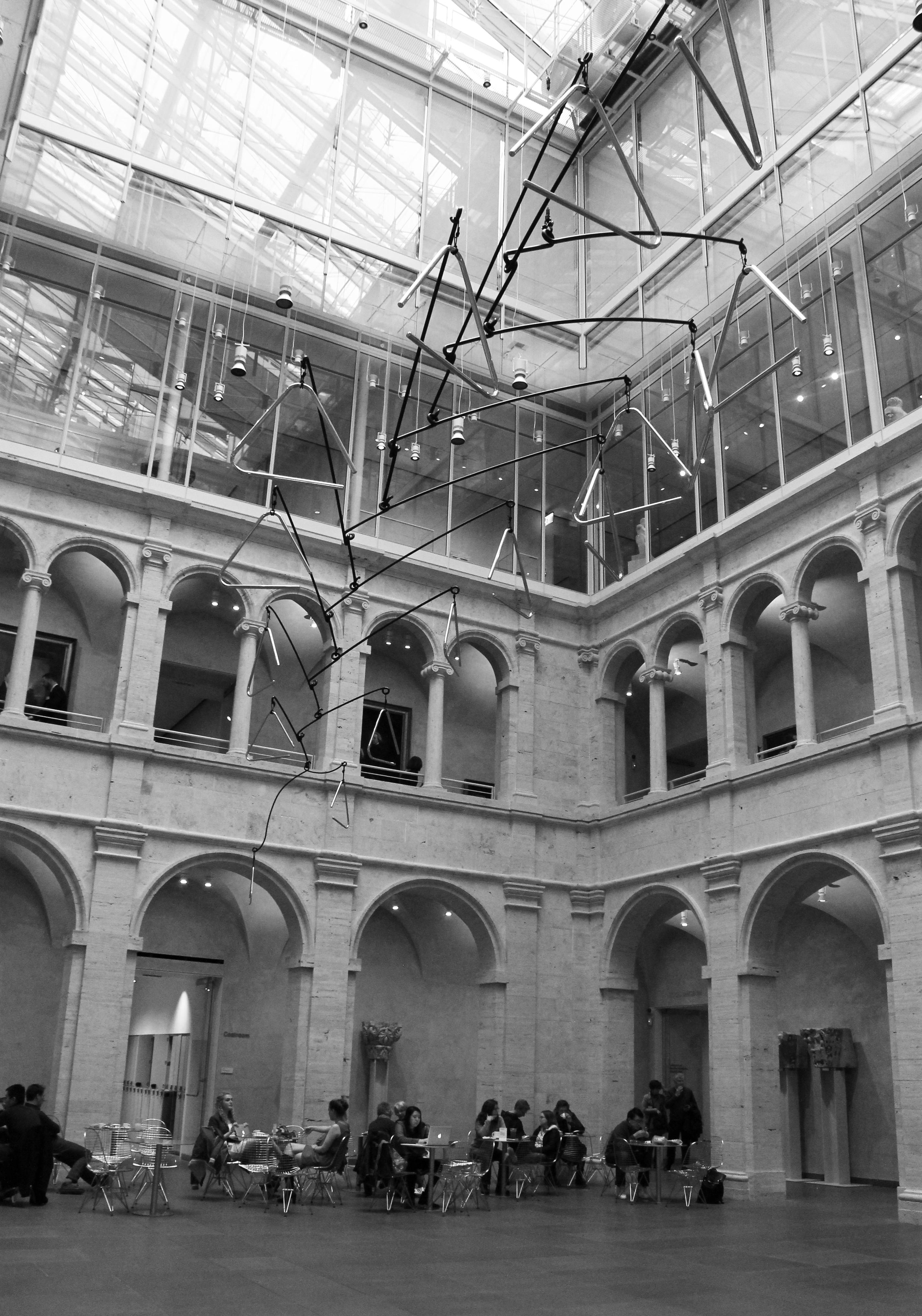
That’s artsy.
The Crimson thecrimson.com/arts
Cambridge Crime Numbers Reach Five-Decade Low
By CHARLES XU CRIMSON STAFF WRITER
The Cambridge Police Department reported the lowest crime total in more than 50 years on Wednesday, with officers responding to 2,257 serious crimes in 2019, the lowest number since 1968 and a five percent decrease compared to 2018.
Crime in Cambridge has experienced a steady downward trend since 1990, per a department press release. The number of registered incidents has decreased every year since 2010 — except for 2018.
This is the sixth straight year in which reported crime totals have remained below 3,000 incidents.
Serious crimes comprise violent crimes — including murder, rape, robbery, and aggravated assault — and property crimes — including burglary, larceny, and auto theft.
Violent crime decreased by nine percent and property crime decreased by five percent compared to 2018.
Police Commissioner Branville G. Bard Jr. said he was “particularly pleased” with the reduction in gun violence last year. No fatal shootings were reported, and the number of non-fatal shooting victims
I am very proud of these results.
Branville G. Bard Jr. Police Commissioner
reached a five-year low.
Bard credited officers and city residents in achieving historically low crime numbers.
“I am very proud of these results, which reflect that Cambridge is safer today than it has been at any point in recent history,” he said in the press release. “I want to commend our Officers, who are deeply committed to working with the community to ensure that Cambridge is a safe and welcoming city.” Cambridge City Manager Louis A. DePasquale commended the department’s dedication to public safety in the press release.
“This achievement is a reflection of the department’s strong leadership and the police force’s commitment to the community,” DePasquale said in the release.
“It also reflects the department’s deep commitment to their community partners, and the City Council’s consistent support of our recommendations for additional resources for the Cambridge Police Department,” he added.
Compared to other cities in Massachusetts, Cambridge has historically experienced less per-capita crime in every category except larceny, according to the CPD’s 2018 annual crime report. According to the report, the city’s large business and education populations are popular targets for thieves.
charles.xu@thecrimson.com
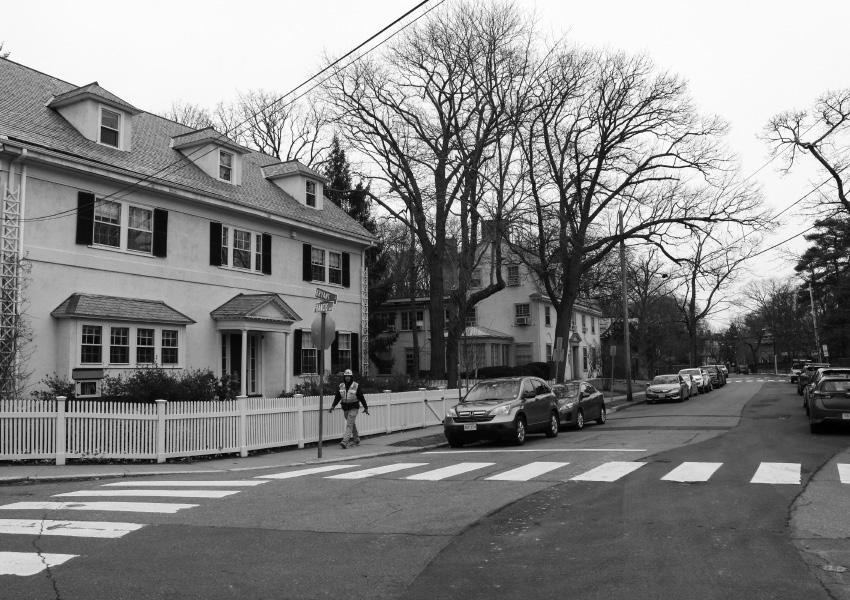
Overall crime rates in Cambridge have decreased, according to a press release from the city. JONATHAN G. YUAN— CRIMSON PHOTOGRAPHER
Allston Plan Reaches Halfway Mark
By TAYLOR C. PETERMAN CRIMSON STAFF WRITER
With Harvard’s Science and Engineering Complex set to hold classes for the fall 2020 semester, the University is more than halfway through completing its Institutional Master Plan, a tenyear development plan for its Allston campus that was first approved in 2013.
The Science and Engineering Complex will serve as a home for facilities of the School of Engineering and Applied Sciences, with expected daily visitors including more than 900 undergraduate students and 400 SEAS graduate students. It is located next to the Harvard Business School and Harvard Innovation Labs.
In addition to the new complex, the Institutional Master Plan includes now-completed additions to the Harvard Business School campus, including the 75,000-square-foot Chao Center, the 81,000-squarefoot Klarman Hall, and the 4,500-square-foot Schwartz Pavilion.
Other projects outlined in the plan that have yet to be completed include the Gateway Project, which will include 300,000 square feet of mixed-use building space, and renovation to the Soldiers Field Park graduate student housing complex.
University spokesperson Brigid O’Rourke wrote in an emailed statement that Harvard looks forward to continued progress on developments in Allston.
“Harvard is in the midst of many ongoing activities in Allston and is enthusiastic about the programs and physical improvements that have emerged through intensive and ongoing consultation with the Allston community and City of Boston,” she wrote. “The growing corridor of research and creativity along Western Avenue will no doubt contribute to a thriving neighborhood.”
In addition to the Institutional Master Plan, Harvard has also released plans for its Enterprise Research Campus, for which real estate firm Tishman Speyer was named the “preferred developer” in December. The research campus will host research and commercial space. It will be located on Western Avenue next to the Science and Engineering Complex.
“We’re very optimistic that the timetable that we set out should be able to be achieved,” Harvard Allston Land Company CEO Thomas P. Glynn III said. “We think the project, when it’s completed, will be one that will make people in the Harvard community proud.”
Some Allston residents have raised concerns regarding Harvard’s expansion in the neighborhood, specifically regarding housing and transportation issues.
Anthony P. D’Isidoro, an Allston resident and member of the Harvard-Allston Task Force, said he and his neighbors still have reservations, especially given the City of Boston’s approval process for the Enterprise Research Campus.
“We still weren’t happy with the specificity that Harvard was dealing with in terms of affordable housing and transportation,” D’Isidoro said of the approval. “Harvard needs to really step up to the plate in Allston to help promote affordable housing.”
Glynn said the University has invested in affordable housing developments in Allston.
“The city requires 13 percent of any project to be affordable housing,” Glynn said. “We wanted to do more than 13 percent.” O’Rourke also wrote that Harvard has devoted resources to increasing access to affordable housing.
“Earlier this year Harvard announced that it would recommit $20 million to an initiative aimed at increasing the amount of affordable housing in Greater Boston,” O’Rourke also wrote in a statement.
As the University expands its footprint into Allston, Harvard students anticipate spending more of their time across the river.Victor L. Qin ’21 said he expects to have classes in Allston starting next semester and has been involved in the move through the Harvard College Engineering Society.
“I’m on the board of the Harvard College Engineering Society, so I’ve been working closely with administration on what the Allston move might look like for undergraduates,” he said.
Qin described a sense of “general cautious excitement” surrounding the Allston campus.
“People are very excited about the Allston campus. What they’re not excited about, obviously, is transportation worries, food, and other concerns with Allston,” he said. “That being said, I know that there are plans in place to alleviate those concerns.”
taylor.peterman@thecrimson.com
DIVEST FROM PAGE 1
Prison Divestment Activists Sue Univ.
have resisted previous calls to divest from the prison industry.
This new legal push does not mark the first time student divestment activists have filed suit against the University.
In 2014, a group of seven Harvard student activists filed a lawsuit against Harvard alleging that the University’s investment in fossil fuels was in violation of the school’s original charter.
More recently, HPDC held a series of events on campus promoting prison divestment, titled “Free Them Week,” in late October.
Harvard’s divestment movements more broadly made national headlines in November, when protesters disrupted the 136th edition of the Harvard-Yale Game in New Haven. Demonstrators from Harvard and Yale occupied the field during halftime, calling on the two Universities to divest from the fossil fuel industry and from Puerto Rican debt.
Harvard has previously elected to partially divest from companies profiting from apartheid in South Africa and genocide in Darfur, Sudan, and to fully divest from the tobacco
Instead of helping to dismantle the entanglement of profiteering, government interests, and the system of human caging, Harvard makes profit off it.
Draft of Plaintiffs’ Prison Divestment Lawsuit Complaint
industry.
HPDC announced in an email to supporters Tuesday that the plaintiffs plan to hold a press conference at 10 a.m. on Wednesday morning on the steps of the Supreme Judicial Courthouse in Boston.
ellen.burstein@thecrimson.com michelle.kurilla@thecrimson.com
The sights and sounds of Harvard.
